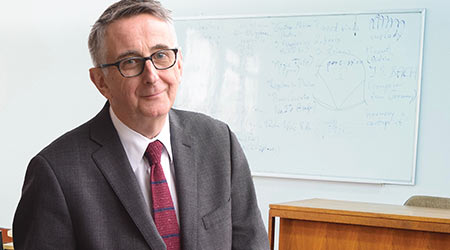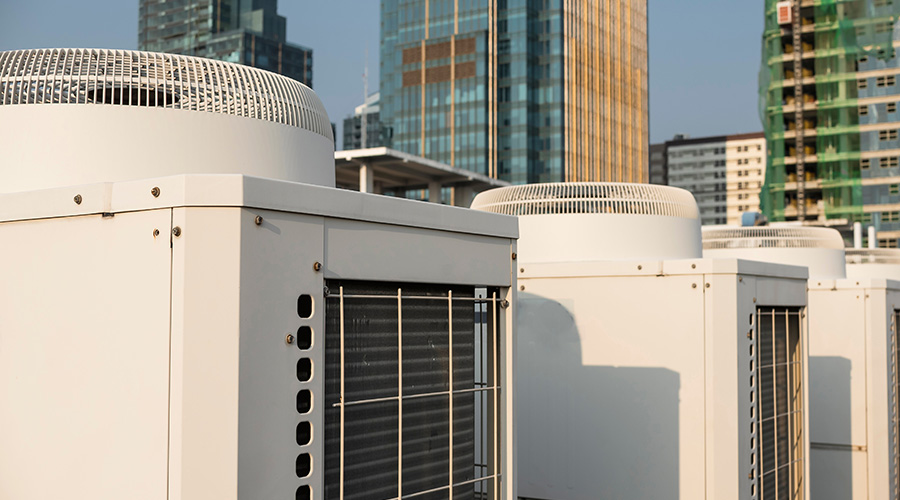 John Chadwick, assistant superintendent, facilities and operations, Arlington Public SchoolsPure Light Images / Laurie Dewitt
John Chadwick, assistant superintendent, facilities and operations, Arlington Public SchoolsPure Light Images / Laurie DewittStaving Off Obsolescence with Sustainability
At Arlington Public Schools, energy efficiency is a priority, as is preventive maintenance and upgrades to ensure sustainability and efficiency long-term.
The goal of getting buildings right both now and for the future is one of the hardest parts of any facility manager’s job. In education, the only constant is change, says Chadwick, so one of the biggest challenges he’s facing is not just finding ways to expand space, but also predicting how that space will be used so it’ll still be relevant 20 or 30 years down the road. “How do we create those spaces that inspire people to use them in different ways?”
At least one facet of that strategy is to ensure that the district’s buildings have as little impact on the environment as possible. Sustainable buildings, by definition, stave off obsolescence much longer than traditional ones.
Making buildings energy efficient is one of the highest priorities, says Chadwick. Despite increasing its footprint by more than 200,000 square feet in the last several years, the district’s average energy use intensity (EUI) has steadily decreased. It currently stands at 72 kBtu/sq. ft./yr. (the energy intense high schools bring that average up a bit).
“EUI is a really good indicator of how buildings operate,” says Cathy Lin, APS’s energy manager. “Discovery Elementary really validates why EUI is important. The whole intent was to reduce EUI as much as possible, and it’s now operating at about a third of a traditional school.” Equally important, says Lin, that facility’s utility costs are 19 cents per square foot. That’s compared to $1.45 per square foot in a traditional school. Discovery was designed to operate at an EUI of 17, but is currently operating at an EUI of 15.8.
Using lessons learned at Discovery and working to decrease EUI district-wide is partially due to a careful, prioritized approach to upgrades funded by a pool of money called the Minor Construction/Major Maintenance (MC/MM). Money for everything from lighting upgrades to LEDs to HVAC controls and upgrades to simple painting or flooring projects is included in this budget. One thing the team has learned from Discovery, says Lin, is to keep systems simple. Discovery uses residential heat pumps because they’re easier to maintain and operate, Lin says. Also, they’re located in closets between classrooms to allow for maintenance without disruption.
The school board earmarks money to fund the MC/MM budget with each referendum, says Chadwick. “We have a list of priorities based on how old a system is and how much money we might have to put into the building.” How much energy can be saved, and reducing the chance of equipment failure are huge factors, as well, says Chadwick. “I’m strongly encouraging them to go a step further than replacing ‘like’ with ‘slightly-more-efficient like,’ he says.
“Energy efficiency has to be part of our criteria now,” says Lin. “Especially when we’re replacing HVAC and lighting, we’ve improved the process of selecting upgrades.”
A school can’t close because of a failed boiler, so reliability is an important factor as well. And principals at each school can request money once per year from the MC/MM budget for major facility upgrades that may not have been scheduled yet. The MC/MM budget is planned out through 2021 so many of the requests are already included in scheduled work, says Chadwick.
Even with its sophisticated upgrade plan, APS is looking into how it can do some performance contracting to upgrade some of its aging buildings, says Chadwick. He’s also negotiating a solar power purchase agreement to reduce the district’s carbon footprint. One of Chadwick’s long-term goals is to get to net-zero energy in an existing building, a challenge he sees as possible, but very difficult.
Related Topics:














